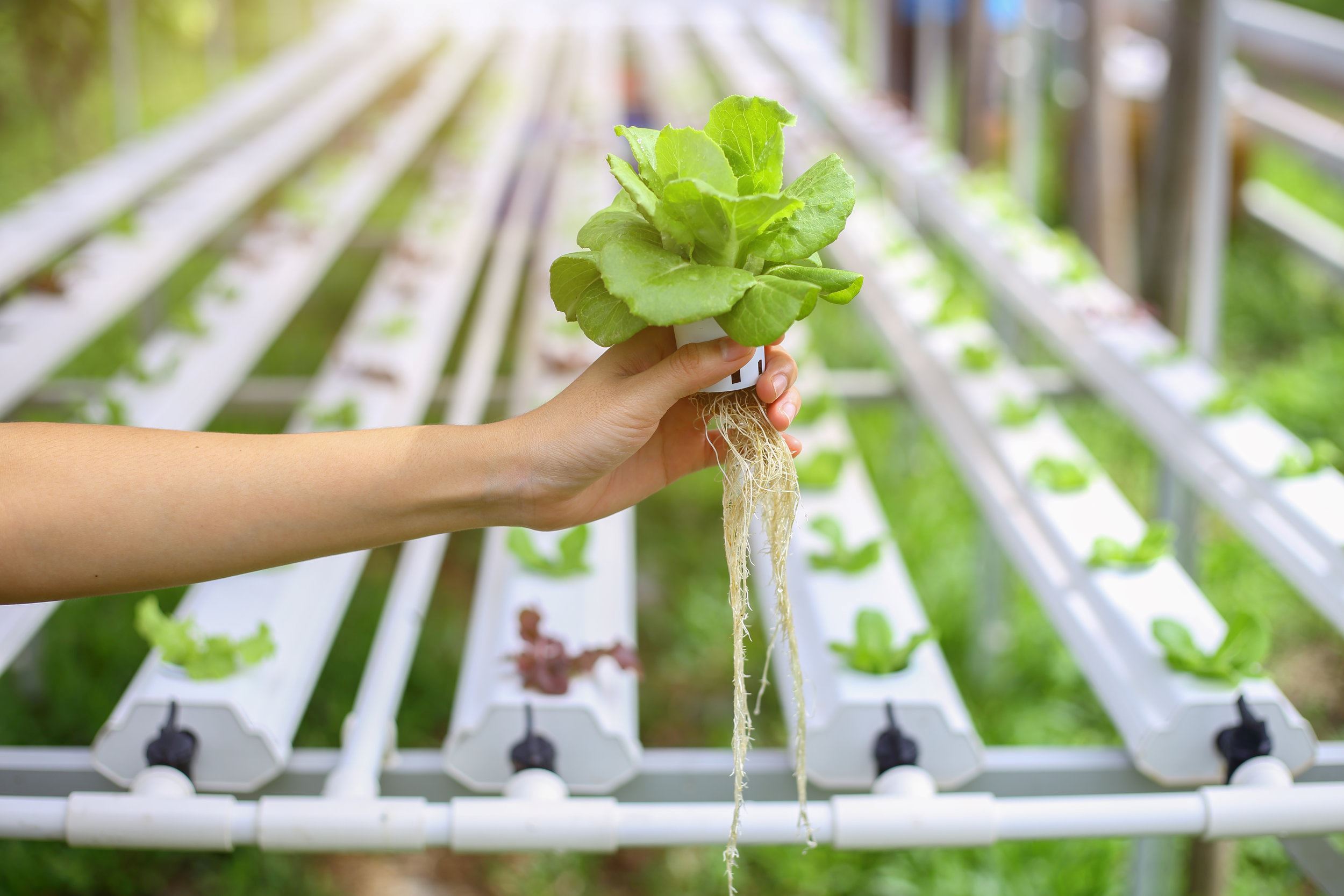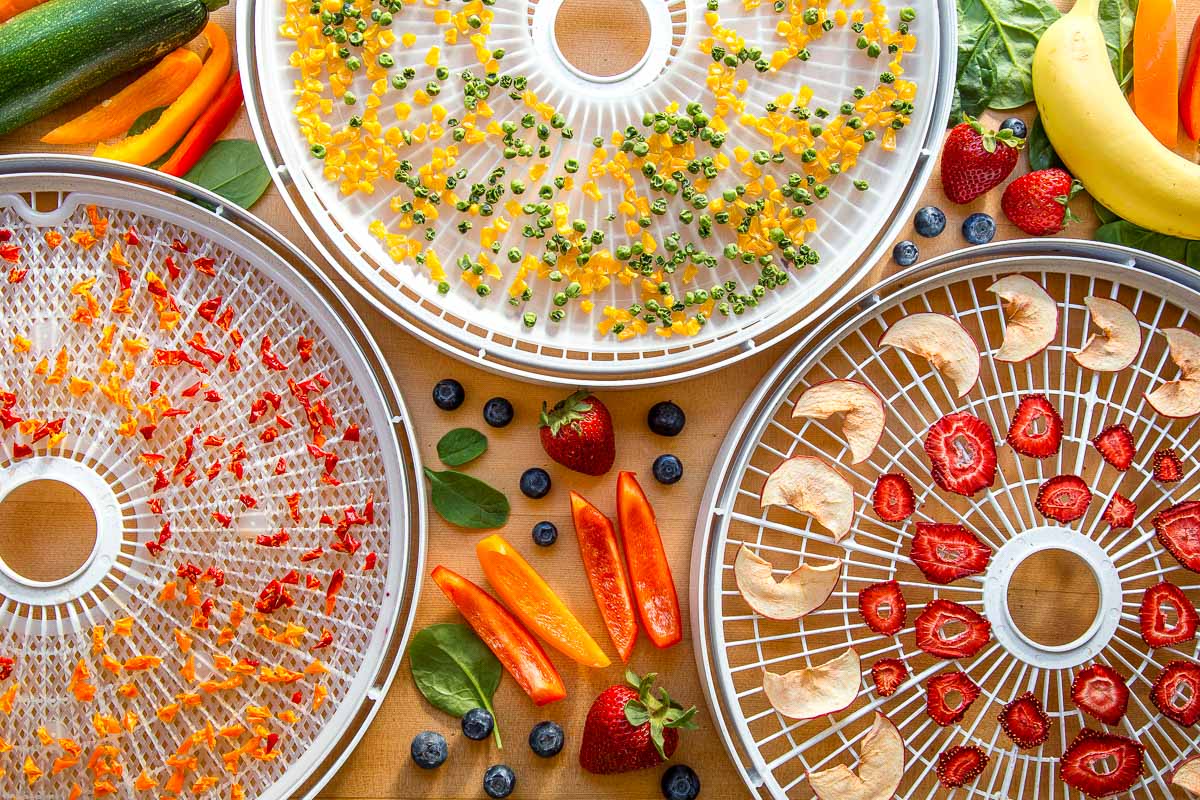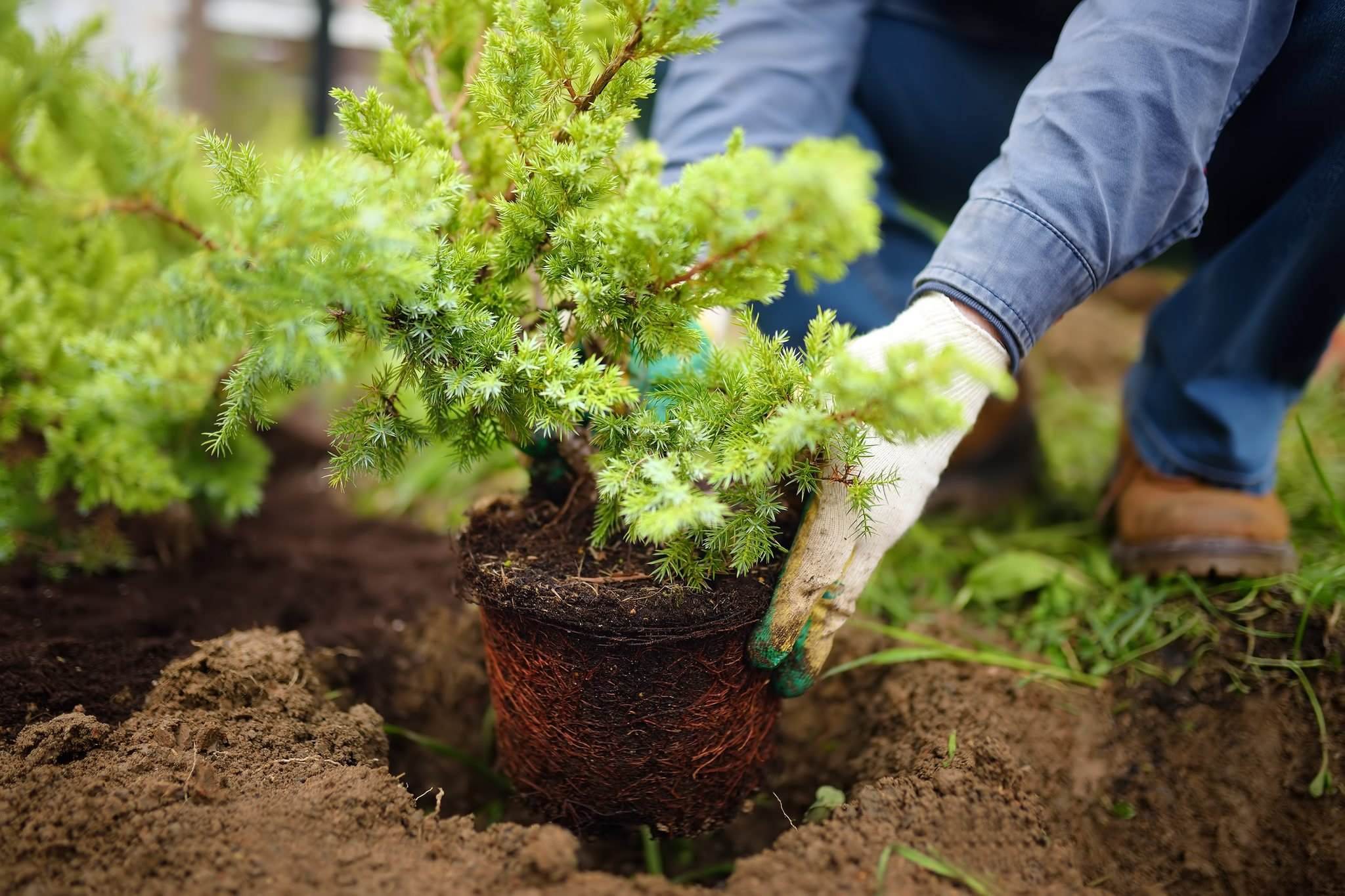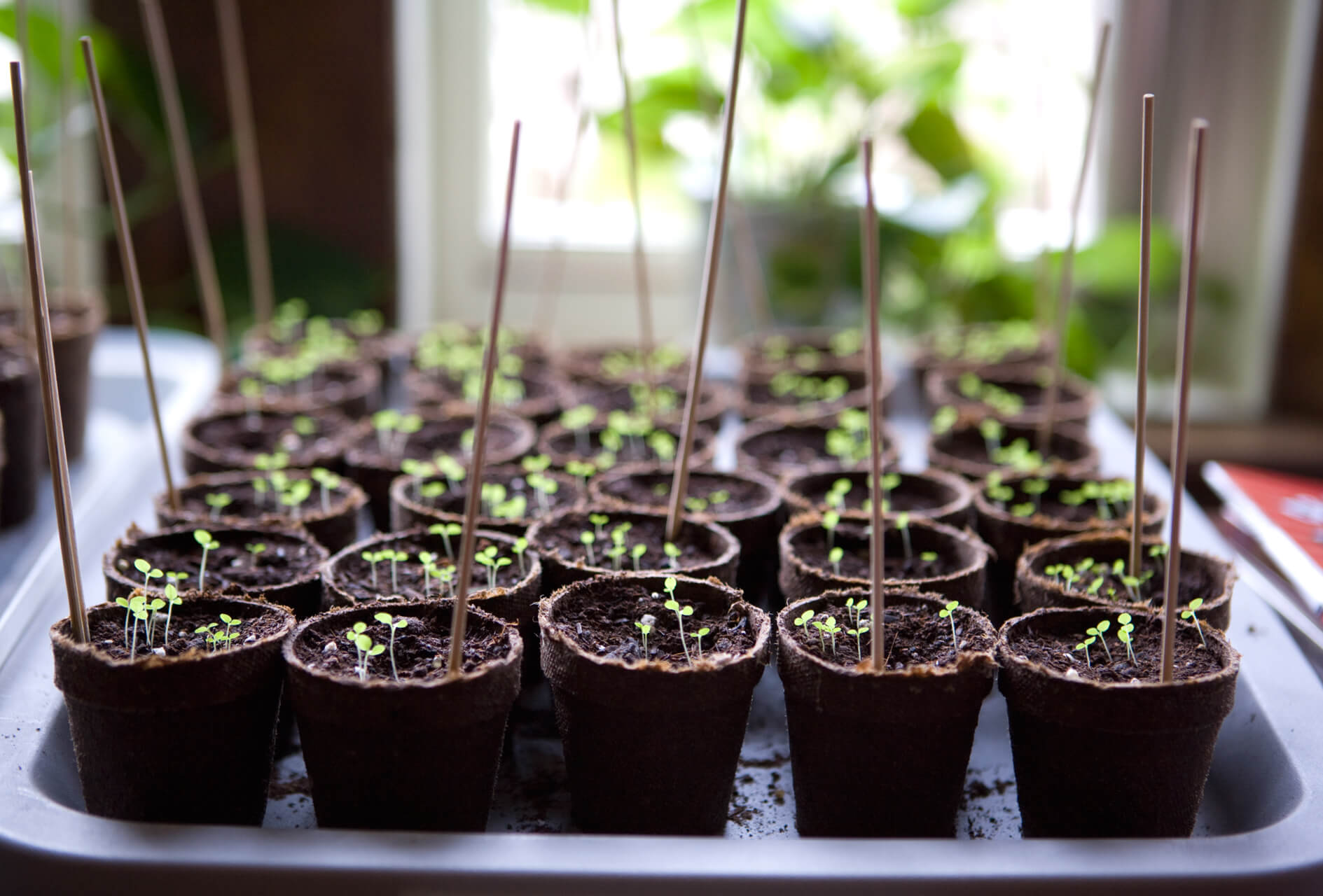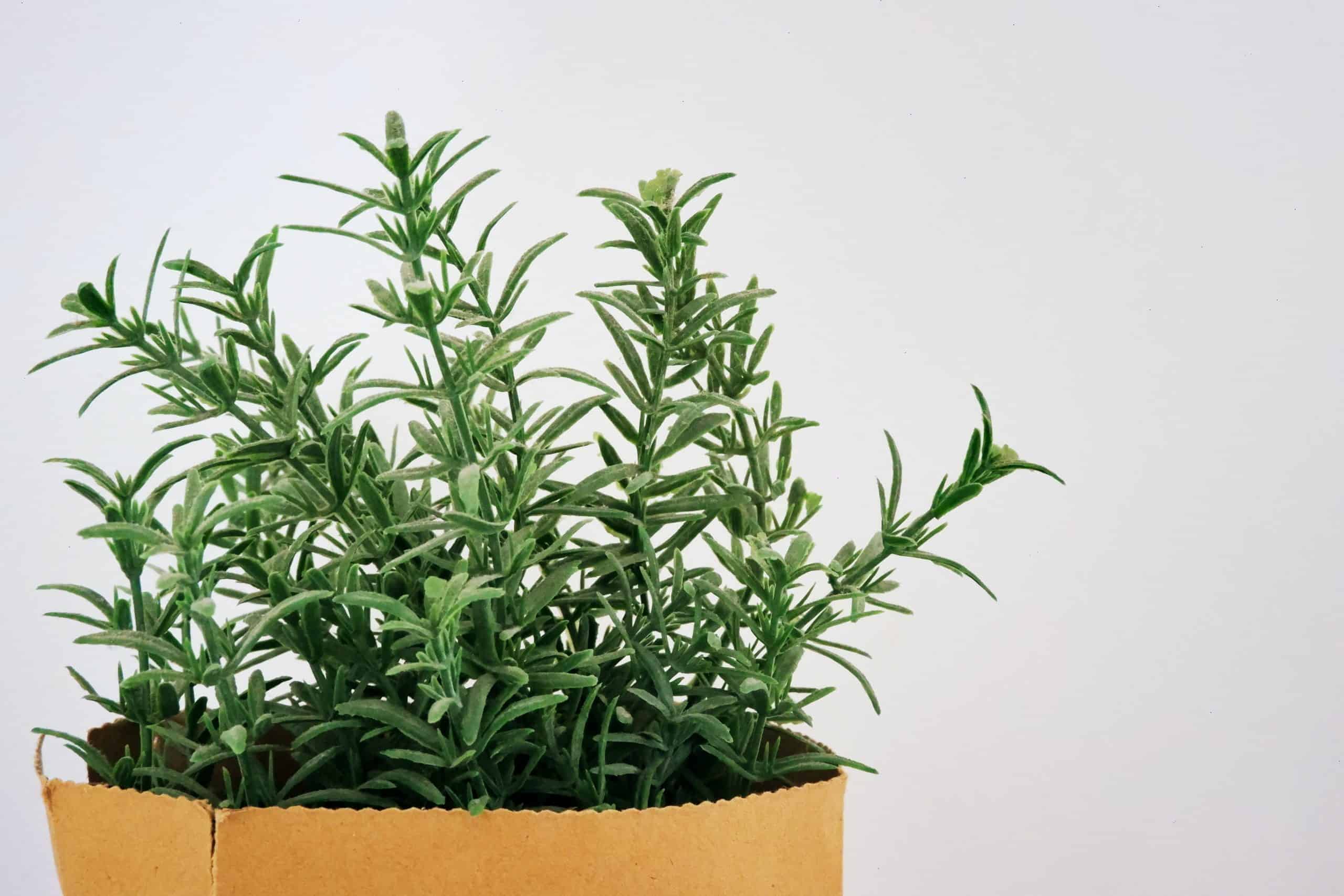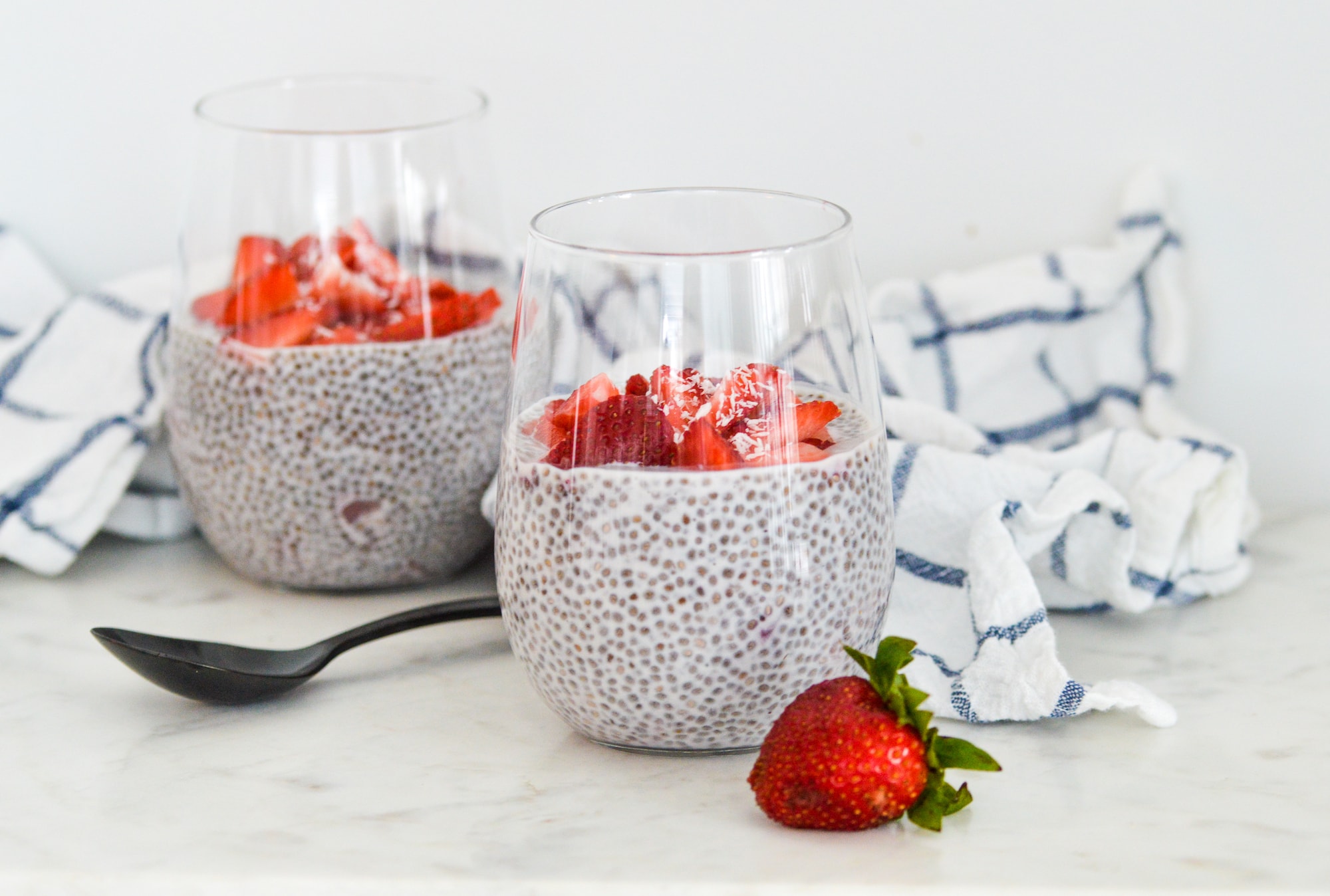Home>Gardening Techniques>Seasonal Gardening>What Can I Start Planting In January
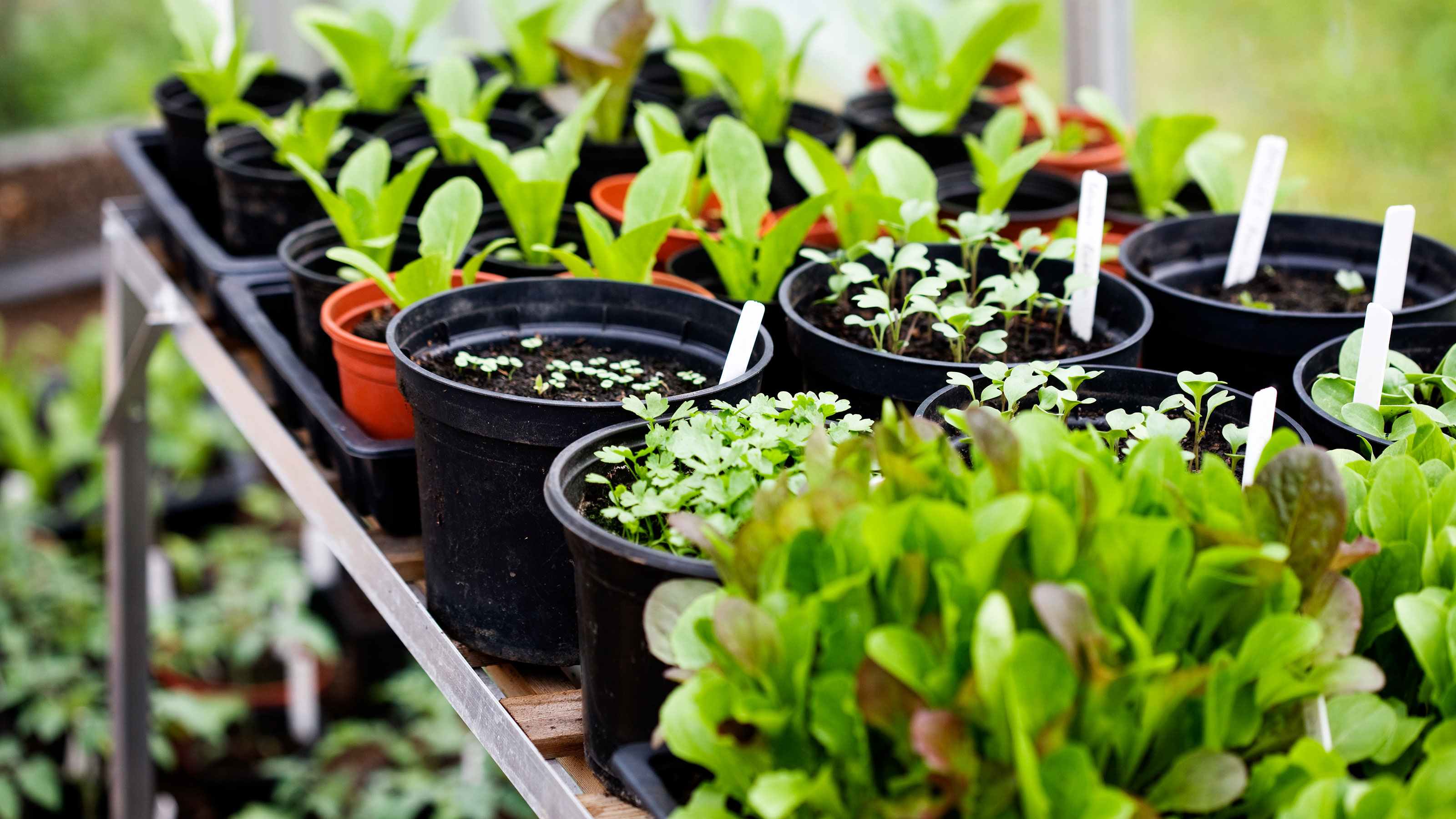

Seasonal Gardening
What Can I Start Planting In January
Modified: January 23, 2024
Discover the best seasonal gardening tips and find out what you can start planting in January. Start your year off right with a thriving garden!
(Many of the links in this article redirect to a specific reviewed product. Your purchase of these products through affiliate links helps to generate commission for Chicagolandgardening.com, at no extra cost. Learn more)
Table of Contents
Introduction
Welcome to the world of seasonal gardening! As the new year begins, many gardening enthusiasts are eager to get their hands dirty and start planting. But what can you start planting in January? It may seem like a challenging task, but with the right knowledge and preparation, you can have a thriving garden even in the midst of winter.
January is a time of renewal and growth, and it’s the perfect opportunity to kickstart your gardening journey. Whether you have limited outdoor space or prefer to grow plants indoors, there are plenty of options available to suit your needs. From vegetables and fruits to herbs and flowers, you’ll discover a wide range of plants that can be started in January.
But why should you consider planting in January? There are several benefits to getting a head start on your garden during this time of year. First and foremost, it allows you to maximize your gardening season. By starting early, you’ll have a longer growing period, resulting in more bountiful harvests and a greater variety of crops.
Planting in January also helps you beat the rush. As spring approaches, gardening centers and nurseries become crowded, making it more difficult to find the plants and supplies you need. By starting in January, you can avoid the crowds and have your pick of the best quality seeds and seedlings.
Furthermore, planting in January allows you to take advantage of the unique opportunities and challenges posed by the winter climate. It’s a chance to experiment with cold-weather crops, try out protective measures like row covers and cold frames, and learn valuable lessons about successful winter gardening.
Whether you’re a seasoned gardener or a beginner, understanding your local climate is essential. January weather can vary greatly depending on where you live, so it’s important to consider the specific conditions in your region. Factors such as average temperature, frost dates, and precipitation levels will all have an impact on what can successfully be planted in January.
Now that you have a basic understanding of the benefits of planting in January and the importance of climate considerations, let’s dive into the specific options available to you. In the following sections, we’ll explore both indoor and outdoor planting options, as well as highlight some of the top vegetables, fruits, herbs, and flowers that can be started in January.
Benefits of Planting in January
Planting in January offers a host of benefits for both experienced gardeners and beginners alike. Here are some of the top advantages of getting a head start on your gardening journey during this time of year:
1. Extended Growing Season: By planting in January, you extend your growing season and increase your chances of a successful harvest. Starting early allows plants to establish stronger root systems and take advantage of favorable weather conditions as spring arrives.
2. Variety of Crops: January is the perfect time to experiment with a wide range of crops. Cold-weather vegetables like kale, lettuce, spinach, and radishes thrive in cooler temperatures, making them ideal choices for early planting. You can also start herbs like parsley, dill, and chives, as well as perennial flowers like pansies and snapdragons.
3. Precious Time Savings: Planting in January means you’ll have a head start on your garden maintenance tasks. As the planting season progresses, your previously established plants can be maintained, and you can focus on other essential tasks like weeding, mulching, and pest management.
4. Availability of Resources: Nurseries and garden centers tend to have a good supply of seeds, seedlings, and gardening supplies in January. The rush of the gardening season hasn’t yet begun, so you’ll have a wider selection and higher quality options to choose from.
5. Avoid Crowded Spaces: By getting a jump-start on your gardening in January, you can avoid the crowded spaces that often arise during the springtime rush. This allows you to shop for plants and supplies at a more leisurely pace, ensuring you get exactly what you need without feeling overwhelmed by the crowds.
6. Learn from Winter Gardening: Planting in January gives you the opportunity to learn valuable lessons about winter gardening. Cold-weather crops, protective measures like row covers or cold frames, and the challenges of gardening during the colder months are all experiences that can help you grow as a gardener.
By taking advantage of the benefits of planting in January, you set yourself up for a successful gardening season. The extended growing season, variety of crops, time savings, availability of resources, and the opportunity to learn from winter gardening experiences make January an excellent time to get your hands in the soil and start planting.
Climate Considerations
When it comes to planting in January, it’s crucial to consider the specific climate conditions in your region. Understanding the weather patterns and average temperatures will help guide your plant choices and ensure their success. Here are some climate considerations to keep in mind:
1. Hardiness Zone: Determine your hardiness zone, which indicates the average minimum winter temperature in your area. This information will guide you in selecting plants that can tolerate the cold temperatures of January. You can easily find your hardiness zone online or consult with a local garden center.
2. Frost Dates: Know the average date of the last spring frost and first fall frost in your area. This information is essential for determining when to start your seeds or transplant seedlings outdoors. Some crops can tolerate light frost, while others require protection or should be started indoors and transplanted later in the season.
3. Average Temperature: Consider the average temperature range in your region during January. Some plants may struggle in extreme cold, while others thrive in cooler temperatures. Select crops that are well-suited to your average temperature conditions for optimal growth and productivity.
4. Precipitation Levels: Take into account the amount of rainfall or snowfall your area typically experiences in January. Ensure you choose plants that can handle the moisture levels in your region. Consider the need for supplemental watering if your area experiences dry spells or protect plants from excessive moisture if your region tends to be wet.
5. Microclimates: Note any microclimates in your garden or landscape. Microclimates are small areas that have different temperature or moisture conditions compared to the surrounding areas. For example, a protected south-facing wall may provide a warmer environment, allowing you to grow more tender plants. Take advantage of microclimates to expand your planting options.
Understanding the climate considerations specific to your area is essential for successful gardening in January. By selecting plants that are well-suited to your hardiness zone, knowing the average temperatures and frost dates, considering precipitation levels, and utilizing microclimates, you can create an optimal growing environment for your plants.
Indoor Planting Options
If you have limited outdoor space or want to start gardening before the weather permits outdoor planting, indoor gardening is the perfect solution. Indoor planting allows you to enjoy gardening year-round, regardless of the season. Here are some indoor planting options to consider:
1. Herbs: One of the easiest and most rewarding indoor gardening options is growing herbs. Herbs like basil, thyme, mint, and cilantro can be grown in small pots on a sunny windowsill or under artificial grow lights. They provide fresh flavors for your culinary creations and add a touch of greenery to your indoor space.
2. Microgreens: Microgreens are young, tender seedlings that are packed with flavor and nutrients. You can grow microgreens from a variety of seeds, including radish, arugula, broccoli, and sunflower. They require minimal space and can be harvested in as little as two weeks. Add them to salads, sandwiches, and smoothies for a burst of freshness.
3. Salad Greens: If you enjoy fresh salads, consider growing your own salad greens indoors. Varieties like lettuce, spinach, and kale can be grown in shallow containers or vertical planters. Place them in a well-lit area or use artificial grow lights to ensure they receive enough light for healthy growth.
4. Dwarf Vegetables: Some vegetable varieties are specifically bred to thrive in small spaces, making them ideal for indoor gardening. Look for dwarf varieties of tomatoes, peppers, and eggplants, which can be grown in containers. Provide them with adequate light and proper care, and you’ll be rewarded with delicious homegrown vegetables.
5. Flowers: Indoor gardening isn’t limited to edible plants. You can also bring the beauty of flowers indoors by growing houseplants like African violets, orchids, or peace lilies. These plants not only add color and fragrance to your home but also help purify the air.
When indoor gardening, remember to provide proper lighting, temperature, and humidity conditions that mimic the plants’ natural requirements. Monitor soil moisture levels and adjust watering accordingly. Additionally, using well-draining potting soil and providing adequate airflow can help prevent common indoor plant problems such as root rot and fungal diseases.
Indoor planting options offer a fantastic opportunity to indulge in your green thumb throughout the year. Whether you’re looking to grow fresh herbs for cooking, enjoy vibrant microgreens, supplement your salad greens, harvest homegrown vegetables, or bring the beauty of flowers indoors, you’ll find plenty of options to suit your indoor gardening preferences.
Outdoor Planting Options
As January brings the promise of a new gardening season, it’s time to start thinking about outdoor planting options. While the weather may still be chilly in many regions, there are several crops that can handle the cooler temperatures and provide a jump-start on your garden. Here are some outdoor planting options for January:
1. Leafy Greens: Cold-hardy leafy greens like kale, spinach, Swiss chard, and lettuce can be sown directly into the ground or in containers. These crops not only thrive in cooler temperatures but also tolerate light frost. Plant them in well-drained soil, and consider using row covers or cloches to provide some protection during extreme cold snaps.
2. Root Vegetables: Root vegetables such as carrots, radishes, turnips, and beets can also be planted in January. These crops prefer cooler soil temperatures and can develop more flavor in chilly conditions. Just make sure to prepare the soil properly, removing any rocks or debris that may hinder root growth.
3. Onions and Garlic: January is an excellent time to plant onions and garlic, which are both cold-hardy crops. Plant onion sets or garlic cloves in well-drained soil and provide them with regular water. These alliums will slowly grow throughout the winter months and be ready for harvest in late spring or early summer.
4. Strawberries: If you’re looking for a perennial crop, consider planting strawberries in January. Strawberry plants can be established in winter and will produce sweet berries in spring and summer. Choose a sunny location, prepare the soil with organic matter, and ensure good drainage to set your strawberries up for success.
5. Asparagus: Asparagus is a classic perennial vegetable that can be planted in January. It requires a bit more patience as it takes a couple of years to establish a productive asparagus bed. Prepare a well-drained, sunny area and plant asparagus crowns at the suggested depth. Once established, you’ll enjoy a bountiful asparagus harvest for years to come.
When planting outdoors in January, be mindful of the specific climate in your region. Keep track of the average frost dates and consider using protective measures like row covers or cold frames if needed. It’s also important to provide proper spacing between plants to ensure good air circulation and prevent the spread of diseases.
By taking advantage of outdoor planting options in January, you can get a head start on your garden and enjoy an earlier harvest. Leafy greens, root vegetables, onions, garlic, strawberries, and asparagus are just a few examples of the crops that thrive in cooler temperatures and can be planted during this time of year.
Vegetables to Plant in January
January is a great time to start planting vegetables that can handle the cool temperatures and set the stage for a productive garden season. Here are some top vegetables to consider planting in January:
1. Leafy Greens: Leafy greens like kale, spinach, Swiss chard, and lettuce are perfect choices for January planting. They thrive in cooler temperatures and can tolerate light frosts. Sow the seeds directly into the ground or in containers, ensuring well-drained soil and keeping the plants well-watered as they establish.
2. Root Vegetables: Root vegetables such as carrots, radishes, turnips, and beets can also be planted in January. These crops prefer cooler soil temperatures and can develop better flavor in chilly conditions. Prepare the soil by removing rocks and other debris, and sow the seeds at the appropriate depth. With proper care, you’ll have a bountiful harvest by spring.
3. Onions and Garlic: January is the perfect time to plant onions and garlic. Both of these crops are cold-hardy and can be planted as sets or cloves. Ensure well-drained soil and provide sufficient watering. As the months pass, you’ll notice the plants slowly grow, and by late spring or early summer, you’ll have delicious homegrown onions and garlic.
4. Peas: Peas are cool-season crops that can be sowed directly in the ground in January. They prefer cooler soil temperatures and thrive in milder winter climates. Provide support for the plants to climb as they grow and enjoy a fresh harvest of sweet, crisp peas in the spring months.
5. Asparagus: Asparagus is a perennial vegetable that can be started from crowns in January. It requires some patience, as it takes a couple of years for the asparagus bed to establish, but the wait is worth it. Prepare a well-drained, sunny location and plant the crowns at the recommended depth. Once established, you’ll enjoy a long-lasting supply of tender asparagus spears.
6. Cabbage: Cabbage is a cold-hardy vegetable that can be started indoors in January and transplanted outdoors later in the season. Sow the seeds in seed trays or small pots, and keep them in a warm, well-lit area. Once the seedlings are established and the risk of frost has passed, transplant them into your garden, providing ample spacing between plants.
Remember to provide proper care and maintenance to your vegetable plants throughout the growing season. Regularly check for pests, water the plants as needed, and provide any necessary support or protection from extreme weather conditions.
By planting leafy greens, root vegetables, onions, garlic, peas, cabbage, and asparagus in January, you’ll give yourself a head start on a productive and delicious garden season. Enjoy the satisfaction of growing your own vegetables and reap the benefits of fresh, flavorful produce right from your own backyard.
Fruits to Plant in January
January is an excellent time to start planting fruit trees and bushes, setting the stage for a fruitful and productive garden. While some fruits may take a few years to mature and bear fruit, the reward is well worth the wait. Here are some fruits to consider planting in January:
1. Apples: Apples are popular fruits that can be grown in a variety of climates. Choose apple tree varieties suitable for your region and climate conditions. Plant them in well-drained soil and provide proper spacing between trees. Remember that apple trees require cross-pollination, so be sure to plant two different apple varieties that bloom at the same time for successful fruit production.
2. Pears: Pears are another delicious fruit option for January planting. They require similar care to apple trees, including well-drained soil and proper spacing. Just like apples, pear trees also need cross-pollination, so make sure to plant two different pear varieties that bloom concurrently.
3. Citrus Fruits: Citrus fruits like lemons, oranges, and grapefruits thrive in warmer climates. They can be grown in containers or planted directly into the ground, depending on your specific location. Citrus trees require well-drained soil, ample sunlight, and consistent watering. They can also be grown indoors in colder regions and brought outside during the warmer months.
4. Blueberries: Blueberries are a popular fruit that can be planted in January. These bushes prefer slightly acidic soil with good drainage. Consider adding organic matter like peat moss or compost to the soil before planting. Blueberries require cross-pollination, so planting two different varieties in close proximity will promote good fruit production.
5. Strawberries: Strawberries are a versatile fruit that can be grown in various regions. They can be planted in January as either seedlings or bare-root plants. Ensure well-drained soil, and plant them in a sunny location. Strawberries are ideal for growing in containers, hanging baskets, or garden beds.
6. Raspberries and Blackberries: Raspberries and blackberries are delicious fruits that can be planted in January. These fruits grow on canes, which need proper support. Plant them in well-drained soil with sufficient spacing between plants. As they grow, provide trellises or stakes to help support the canes and ensure proper fruiting.
Proper care and maintenance are crucial for fruit trees and bushes. Regularly water the plants, provide fertilization as needed, and control pests and diseases. Pruning is also essential for shaping the trees or bushes and promoting healthy growth.
By planting apples, pears, citrus fruits, blueberries, strawberries, raspberries, and blackberries in January, you’ll be on your way to enjoying a bountiful harvest of fresh, homegrown fruits in the years to come. Patience and proper care will yield delicious rewards for both you and your garden.
Herbs to Plant in January
January is the perfect time to start planting herbs and infuse your garden and kitchen with delightful flavors and aromas. Whether you have a dedicated herb garden or prefer growing them in containers, here are some herbs that you can plant in January:
1. Basil: Basil is a versatile herb that thrives in warm weather. Start basil indoors from seeds or transplant young seedlings outdoors once the frost risk has passed. Basil enjoys plenty of sunlight and well-drained soil. It’s a popular herb used in various cuisines and adds a fresh, aromatic touch to dishes.
2. Parsley: Parsley is an essential culinary herb that can be planted in January. It can tolerate cooler temperatures and prefers partial shade. Sow seeds directly into the ground or in containers with well-drained soil. Parsley is a versatile herb that adds flavor and visual appeal to savory dishes and can also be used as a garnish.
3. Chives: Chives are easy-to-grow herbs that can be planted in January. They prefer full sun to partial shade and well-drained soil. Chives produce slender, onion-flavored leaves that can be harvested throughout the growing season. They add a wonderful flavor to salads, soups, and savory dishes.
4. Dill: Dill is a fragrant herb that can be sown directly into the ground or in containers in January. It prefers full sun and well-drained soil. Dill leaves and seeds are commonly used in pickling, as well as in a variety of dishes, including fish, salads, and sauces.
5. Mint: Mint is a fast-growing herb that can quickly take over the garden if not properly contained. For this reason, it’s often best to plant mint in containers. Mint prefers partial shade and consistently moist soil. It adds a refreshing flavor to beverages, salads, and desserts.
6. Oregano: Oregano is a versatile herb that can be planted in January. It prefers full sun and well-drained soil. Oregano leaves are often used in Mediterranean and Italian dishes, adding a robust and aromatic flavor.
When planting herbs, it’s important to provide them with the appropriate growing conditions. Most herbs prefer well-drained soil, regular watering, and the right amount of sunlight. Keep in mind that some herbs, like mint, may grow aggressively and benefit from being grown in containers or separate garden areas.
By planting basil, parsley, chives, dill, mint, oregano, and other herbs in January, you’ll have fresh flavors at your fingertips throughout the growing season. Experiment with different herbs and enjoy the satisfaction of using homegrown herbs in your culinary creations.
Flowers to Plant in January
January may seem like an unlikely time to think about planting flowers, but there are plenty of varieties that can be sown or planted in the early months of the year. By starting early, you’ll have beautiful blooms to enjoy during the spring and summer seasons. Here are some flowers that you can plant in January:
1. Pansies: Pansies are colorful, cool-season flowers that can be planted in January. They come in a wide range of vibrant hues and can tolerate cooler temperatures. Pansies are perfect for adding pops of color to your garden beds, containers, or hanging baskets.
2. Snapdragons: Snapdragons are another excellent choice for planting in January. These flowers feature tall spikes of colorful blossoms and add vertical interest to your garden. They prefer well-drained soil and can handle cooler temperatures, making them a perfect addition to winter and early spring gardens.
3. Sweet Peas: Sweet peas are fragrant flowers that are ideal for January planting. Soak the seeds in water overnight to help with germination, then sow them directly into the ground or containers. Provide support for the vines to climb as they grow and enjoy their beautiful blooms and sweet scent in the springtime.
4. Primroses: Primroses are charming, early-blooming flowers that can be planted in January. They come in a variety of colors, including hues of pink, purple, yellow, and white. Primroses prefer partial shade and moist, well-drained soil, making them ideal for garden borders, rock gardens, or containers.
5. Violas: Violas, also known as Johnny Jump-Ups, are petite flowers that are perfect for January planting. They are cold-tolerant and can handle fluctuations in temperature. Violas come in a wide range of colors and can be grown in garden beds, containers, or hanging baskets.
6. Daffodils: Daffodils are classic springtime flowers that can be planted in January. These cheerful blooms announce the arrival of spring with their bright yellow petals. Plant daffodil bulbs in well-drained soil, and they’ll reward you with vibrant flowers year after year.
When planting flowers in January, it’s important to consider your specific climate and the hardiness of the plants you choose. Provide proper soil preparation, adequate spacing, and necessary watering to encourage healthy growth and blooming.
By planting pansies, snapdragons, sweet peas, primroses, violas, daffodils, and other flowers in January, you’ll kickstart a beautiful and colorful garden. Embrace the early planting season to enjoy stunning blooms and add vibrancy to your outdoor space.
Conclusion
January may seem like a challenging time to start planting, but with the right knowledge and preparation, you can make the most of this season and have a thriving garden. Whether you choose to focus on indoor planting options or brave the outdoors, there is a wide variety of plants that can be started in January.
By planting in January, you can extend your growing season, maximize your harvests, and beat the springtime rush at gardening centers. It’s a time to embrace the unique opportunities and challenges presented by the winter climate, experiment with cold-weather crops, and learn valuable lessons about successful seasonal gardening.
When considering what to plant in January, remember to take into account your local climate and specific growing conditions. Understand your hardiness zone, frost dates, average temperatures, and precipitation levels to make informed choices and ensure plant success.
From leafy greens and root vegetables to fruits, herbs, and flowers, the options for planting in January are plentiful. Whether you’re interested in growing your own vegetables, savoring the flavors of fresh herbs, or adding beauty to your garden with colorful blooms, January is an exciting time to start your gardening journey.
By providing the appropriate care and maintenance, such as proper watering, fertilizing, and pest management, you can nurture your plants and enjoy a successful and bountiful garden throughout the year.
So, roll up your sleeves, grab your gardening tools, and get ready to grow. Whether you’re an experienced gardener or a beginner, planting in January is a rewarding and fulfilling experience. Embrace the opportunities that this season brings, and enjoy the pleasures of seasonal gardening.

